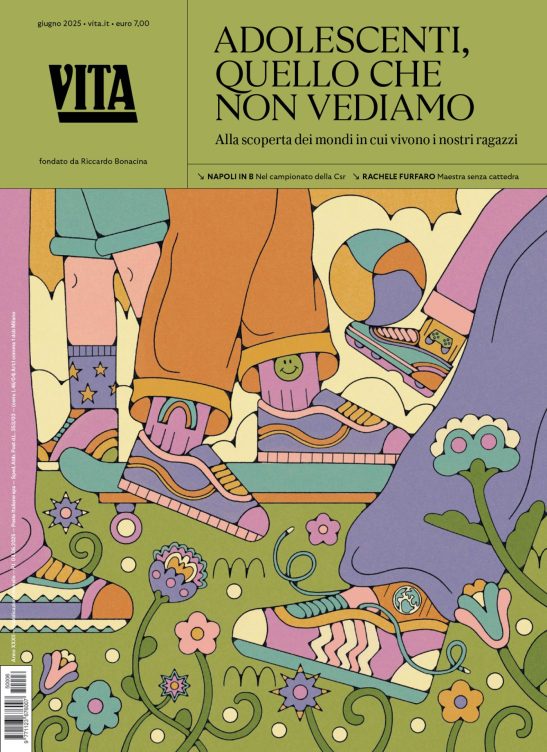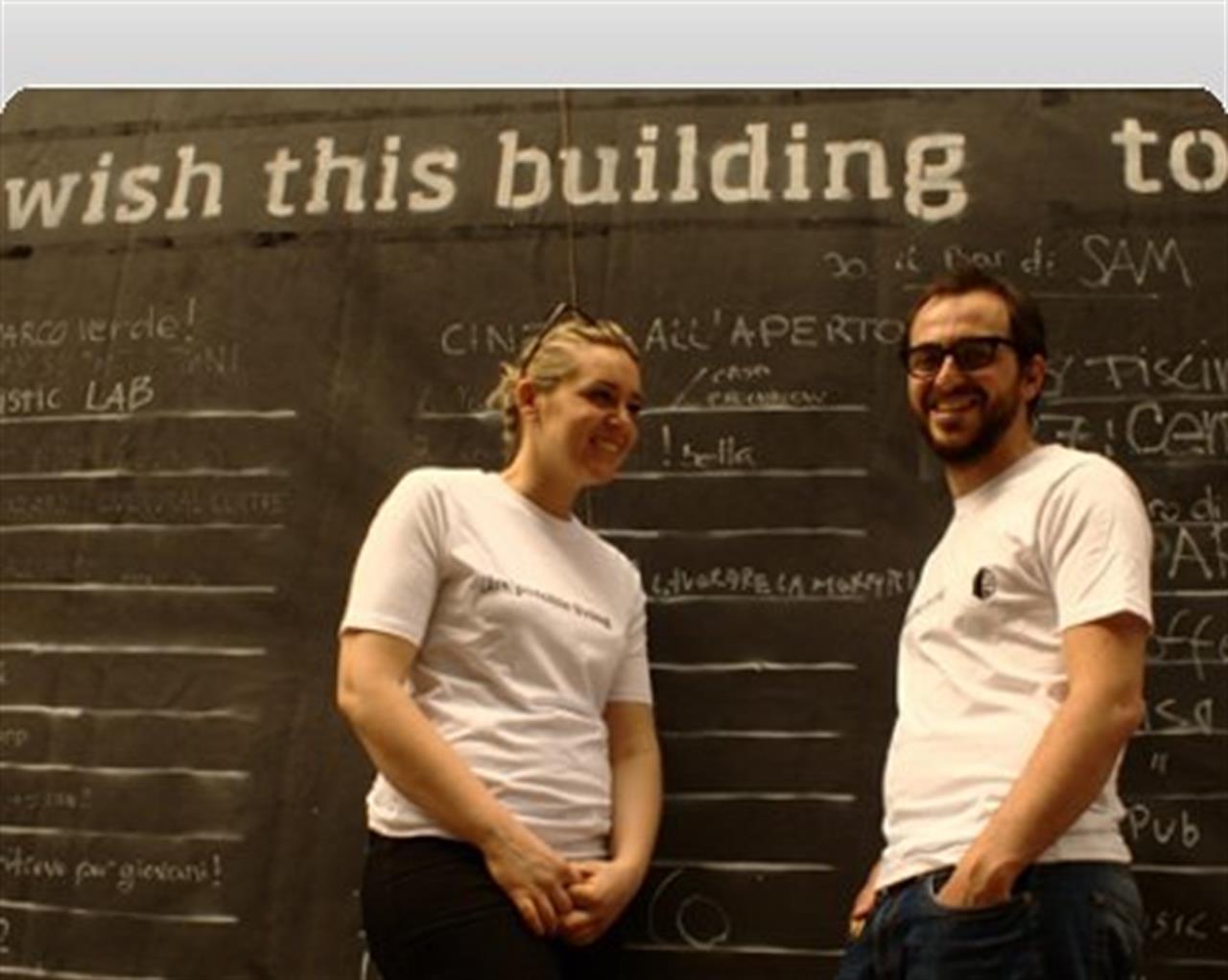Have you ever stopped for a second and wondered what that old abandoned school down the block could become? Have you ever thought that the shabby old house you can see from your kitchen window, might not be that bad after all? Abandoned buildings are everywhere. Many of us walk past them every day, without even noticing but sometimes forgotten architectural treasures are hidden beneath layers of ivy leaves. Andrea Sesta, 28 and Daniela Galvani, 29 have developed Impossible living, a worldwide project to bring old abandoned buildings back to their original splendor.
During the Milan Design week Sesta and Galvani have decided to bring back to life an abandoned house in the city center, by asking people’s opinion on what the building should become and by organizing a “flash”, flash mob. We meet them in front of the huge sheet they’ve hung on the front wall of the house, where dozens of passersby have written their ideas about how to transform it.
How did you get the idea for Impossible living?
A.S. It was very natural. Daniela is an architect and I’m an IT engineer. We’ve always been fascinated by old, abandoned buildings. It started like a blog where we wrote about abandoned buildings around the world, then we created a website based on a crowd sourcing model. At the moment, with the contribution of our followers, we are creating a sort of database by mapping and geotagging abandoned buildings all over the world. We’re also developing an I-phone application to make the tagging process easier.
Why is requalification so important?
D.G. Because it is essential to avoid the deterioration of the city centers and to prevent from excessive urbanization. As an architect I have worked on several projects of sustainable architecture but I’ve realized that there is nothing more sustainable than the renovation of an old building. Many of them are in city centers and they have a great artistic and historical value but the renovations are often so expensive that their owners cannot afford them. Instead of welcoming new inhabitants, these buildings remain empty and start falling apart, while people are forced to move away from the city centers and buy new apartments in modern buildings that have dubious aesthetic qualities and have been built green areas. This is what is happening in many parts of Italy.
How do you plan to promote the requalification of abandoned buildings?
After developing the database, we are going to study sustainable projects in order to rescue the buildings and find investors interested in them. Then we’re going to realize the projects and give these buildings a new life.
Why did you choose this particular building for the Milan Design Week?
Because it is the quintessence of what an abandoned building is. It was built in the early 1900s and it has a great cultural and historical value. It used to be the house of the Brera artists then became a social center and was finally closed in 2007. People from this area love what we’re doing, they are happy to give an opinion on what this building should become, they don’t want to let it die. On Friday evening at 9.pm. we’ve organized a “flash”, flash mob, together with the team of Critical City Upload, which is a pervasive game of urban transformation. We’re going to bring back to life the building for a few seconds by lighting it up with the flashes of our cameras.
http://www.impossibleliving.com/
Si può usare la Carta docente per abbonarsi a VITA?
Certo che sì! Basta emettere un buono sulla piattaforma del ministero del valore dell’abbonamento che si intende acquistare (1 anno carta + digital a 80€ o 1 anno digital a 60€) e inviarci il codice del buono a abbonamenti@vita.it

